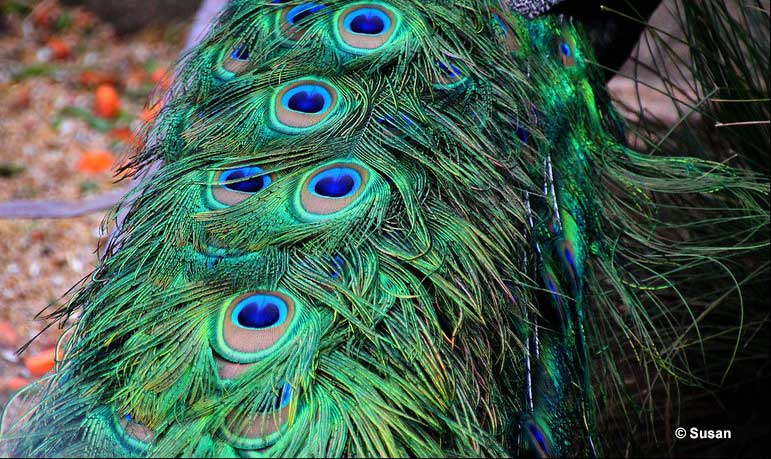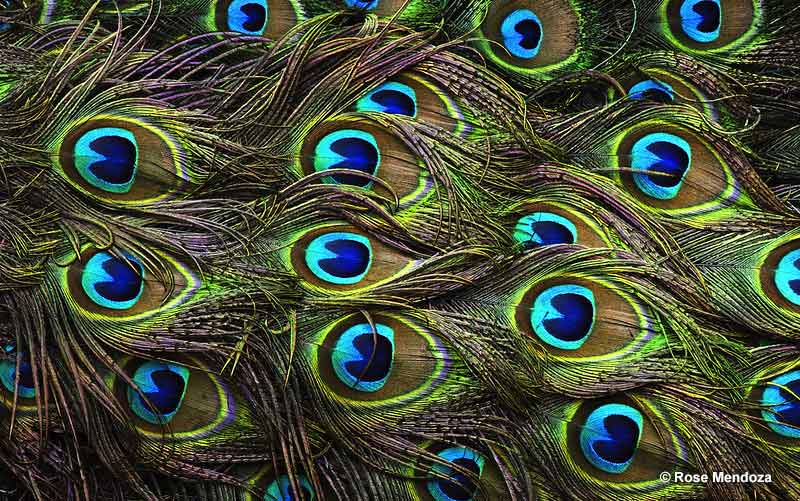
Peacocks are proud birds, and they are admired for their beautiful plumage. Their vibrant feathers have found a place as luxurious decorations in homes, gracing them with elegance and allure.
But have you ever wondered whether there is more to them than just beauty? Let’s find out!
Key takeaways:
- Peacocks are known for the males and their beautiful displays, so it’s no surprise that their feathers hold some symbolism.
- Pride is most often associated with their flamboyant characters.
- Apart from their magnificent tails, peacocks are believed to symbolize beauty and strength.
On this page
Peacock Feather Meaning & Symbolism
Peacock feather symbolism varies across cultures and religions. Generally, their positive symbolism encompasses attributes like good luck, elegance, wisdom, pride, beauty, immortality, rebirth, royalty, wealth, and divine femininity.
Read more: What do peacocks symbolize?
In Hinduism, the feathers signify wealth, luck, and protection. Peacock feathers adorned thrones of royalty, believed to bring prosperity and safeguard homes. They were also considered symbols of immortality and served as a reminder that you will continue to live through your children. In Buddhism, they represent wisdom and the ability to endure life’s negative aspects on the path to enlightenment.
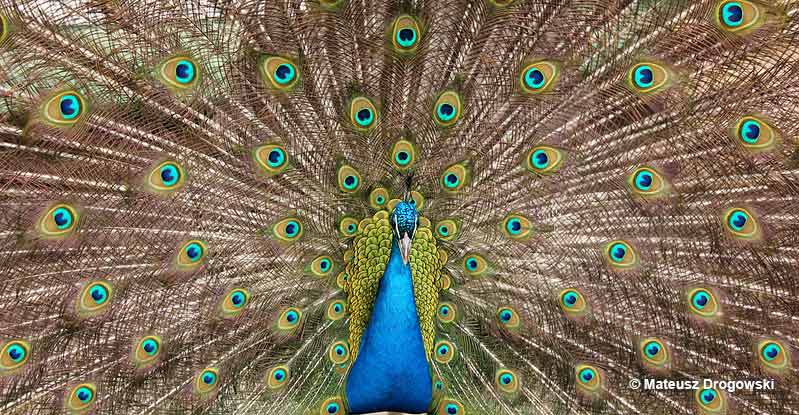
Christianity sees peacock feathers as symbols of resurrection, tied to the belief that peacocks’ skin resists decay. The eye on the peacock feather was a symbol of the all-seeing eye of angels and God.
Greek mythology considers peacock feathers to be symbols of protection. These birds are sacred due to their ties to the queen of gods Hera, the goddess of marriage and childbirth.
The story goes that Argus, a hundred-eyed giant, was sent to keep an eye on one of Zeus’s mistresses, but Zeus killed him. Hera then turned Argus into a peacock (or just put his eyes on the peacock’s tail feathers) as a way to honor him. The peacock turned into Hera’s guardian.
In China, these feathers symbolize power, beauty, and divinity, associated with the compassionate goddess Guan Yin. Ancient civilizations regarded peacocks as symbols of royalty and leadership. However, in Eastern Europe, the feathers are considered bad luck because they were worn by invading Mongol warriors.
What does it mean when you see a peacock feather?
Finding a peacock feather may carry various meanings, ranging from simple reminders to deeper spiritual messages, depending on personal beliefs. If discovered in your bag, car, or home, it may signify being noticed by someone in the physical world, while finding it outdoors might suggest that someone or something is watching over you from above.
In spiritual traditions or according to some religions, finding a peacock feather might mean someone is protecting and watching over you. In Christianity, this is specifically because angels were sometimes depicted as having peacock-feathered wings.
Encountering a peacock feather could signal impending good luck, hope, and happiness, bringing forth opportunities for wealth and financial stability. Discovering one may also hint at embarking on new adventures and entering a transformative phase.
Some meaning could also be derived from what color the peacock feather was:
- Blue peacock feather – peace, wisdom, truth. Embrace your spirituality or nature, find peace, and trust in whatever life has in store for you.
- Green peacock feather – abundance, life growth. Serves as a reminder to connect with nature or that you’re ready to grow and heal as a person.
- White peacock feather – kindness, wisdom, rebirth. This is a rare find. You’re about to enter a phase of transformation. The feather is here to help you understand and focus on what’s to come.
A dream featuring peacock feathers similarly signifies new opportunities and suggests taking time for relaxation and rejuvenation amidst life’s demands. Overall, seeing a peacock feather encourages appreciation for life’s beauty, uniqueness, and the potential for positive changes, symbolizing new beginnings and the ability to overcome challenges.
Spiritual Meaning
The spiritual significance of peacock feathers varies across cultures and beliefs. Peacocks, symbolizing rebirth and immortality, regularly molt and grow new, vibrant feathers. The birds fearlessly flaunt their colorful plumage, which is why some ancient cultures utilized peacock feathers in rituals to foster inner strength and courage.
The eye-shaped patterns on the feathers represent the third eye, signifying self-realization and spiritual awakening.
Many cultures view these eyes as protective symbols against evil spirits and negative energy. Consequently, people get them as tattoos, sew them onto clothing, or incorporate them in some way into jewelry to ward off malevolent forces.
Considered sacred in numerous traditions, peacocks and their feathers feature prominently in religious ceremonies, believed to bring good luck, purity, and prosperity.
In Feng Shui, peacock feathers are deemed highly favorable, attracting good luck and symbolizing peace and harmony within the home.
However, in some Western superstitions, peacock feathers are thought to bring bad luck due to their association with vanity and pride. Some cultures prohibit peacock feathers inside homes, and there’s a superstition that sleeping on a bed adorned with peacock feathers may bring death to the sleeper.
Protection
Peacock feathers symbolize protection through various cultural and spiritual associations. In many traditions, the eye-shaped patterns on the peacock feathers are believed to represent the “all-seeing eye” or the third eye, signifying heightened awareness and perception.
This symbolism extends to the idea of protection against evil spirits and negative energies.
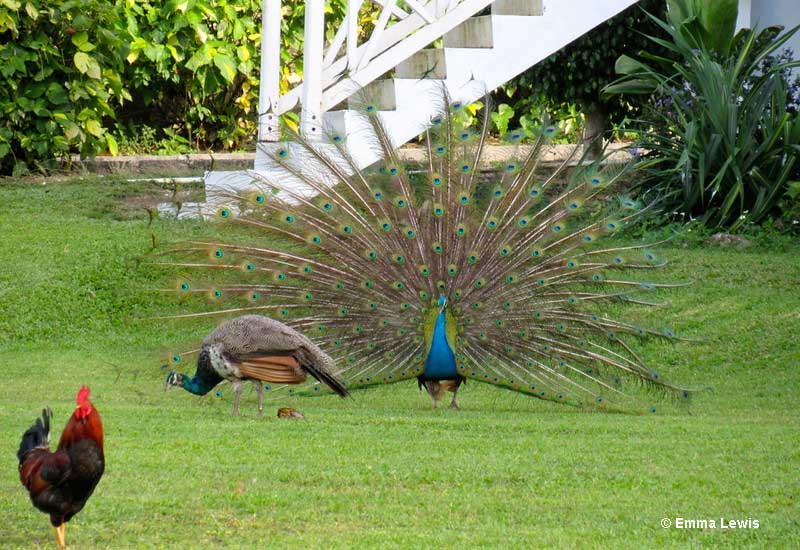
In certain cultures, peacock feathers are incorporated into rituals, tattoos, clothing, and jewelry as protective talismans. The belief is that by adorning oneself or the surroundings with these feathers, one can create a barrier against negative influences. The peacock’s bold display of its vibrant plumage is also seen as a fearless assertion of its presence, akin to standing guard against potential threats.
Immortality and Rebirth
Peacock feathers symbolize immortality and rebirth through their unique characteristics and the cultural interpretations associated with these qualities.
The peacock’s ability to molt its feathers and grow new, vibrant plumage is a powerful symbol of regeneration and renewal. This cyclical process, where the bird sheds old feathers and replaces them with new ones, is metaphorically linked to the concept of rebirth.
In various cultures and mythologies, peacock feathers have been associated with immortality and eternal life for this very reason. For example, in Christianity, peacocks were believed to have flesh that did not decay, contributing to the association with immortality. In Hinduism, the feathers are linked to the gods and goddesses, symbolizing divine qualities.
Pride, Wealth, Royalty
Peacock feathers symbolize pride and wealth through their vibrant colors, majestic appearance, and historical associations with opulence. The peacock’s extravagant and flamboyant display of its iridescent and colorful feathers is often seen as a symbol of pride.
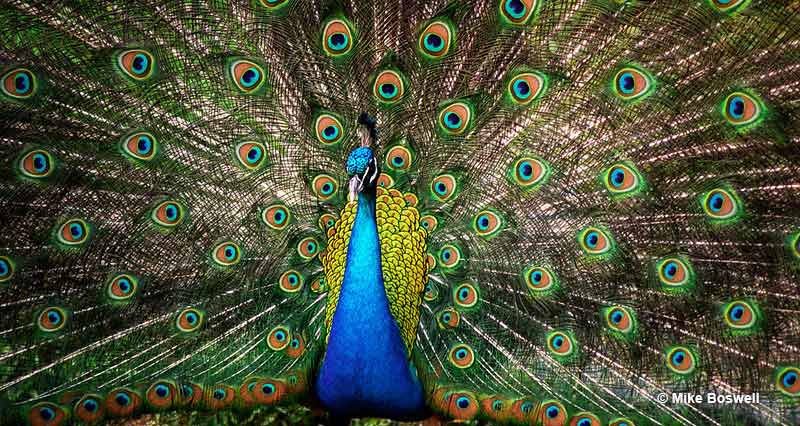
The bird’s ability to showcase its plumage with confidence and poise is metaphorically linked to a sense of self-assuredness and pride in one’s identity.
Throughout history, peacock feathers have been used as decorative elements in various cultures, especially in the context of royalty and nobility. Thrones, crowns, and garments adorned with peacock feathers were considered symbols of wealth and elevated status.
However, in contrast to males, female peacocks are much more laid-back. It’s no surprise they are often overlooked.
Peacock Feather Tattoo Meaning
A peacock feather tattoo can carry various meanings, often influenced by cultural, spiritual, and personal interpretations. It can be made for just aesthetic purposes or also to symbolize something.
Related: Tattoo meanings and ideas
The peacock’s proud display of its feathers is often interpreted as a symbol of confidence and self-assurance.
A peacock feather tattoo can represent pride in one’s identity and the ability to showcase one’s unique qualities. Women often tattoo it somewhere on their bodies as a reminder to love and appreciate themselves.
Due to the eye-like patterns on the feathers, peacock feathers are sometimes seen as protective symbols in various cultures. A peacock feather tattoo can be chosen as a talisman for protection against negative energies or evil forces.
Frequently Asked Questions
What is the spiritual meaning of a peacock feather?
The spiritual meaning of a peacock feather often encompasses themes of spiritual awakening, protection against negative energies, and the cyclical nature of life, symbolizing immortality and renewal. The eye-shaped patterns on the feather may also represent the third eye and intuition or protection.
Is keeping peacock feather is good or bad?
Keeping a peacock feather is generally considered good. However, in some Western superstitions, it is associated with bad luck due to perceived vanity or pride, so interpretations may vary.
What do peacocks symbolize?
Peacocks symbolize beauty, pride, confidence, protection, immortality, and wisdom.
Conclusions
In exploring the symbolism of peacock feathers, we have unveiled an expansive network of meanings and interpretations.
Depending on the belief, they can represent much more than just fancy elements of interior decoration. From representing pride, protection, and spirituality to embodying wealth and rebirth, peacock feathers hold diverse significance across cultures.

